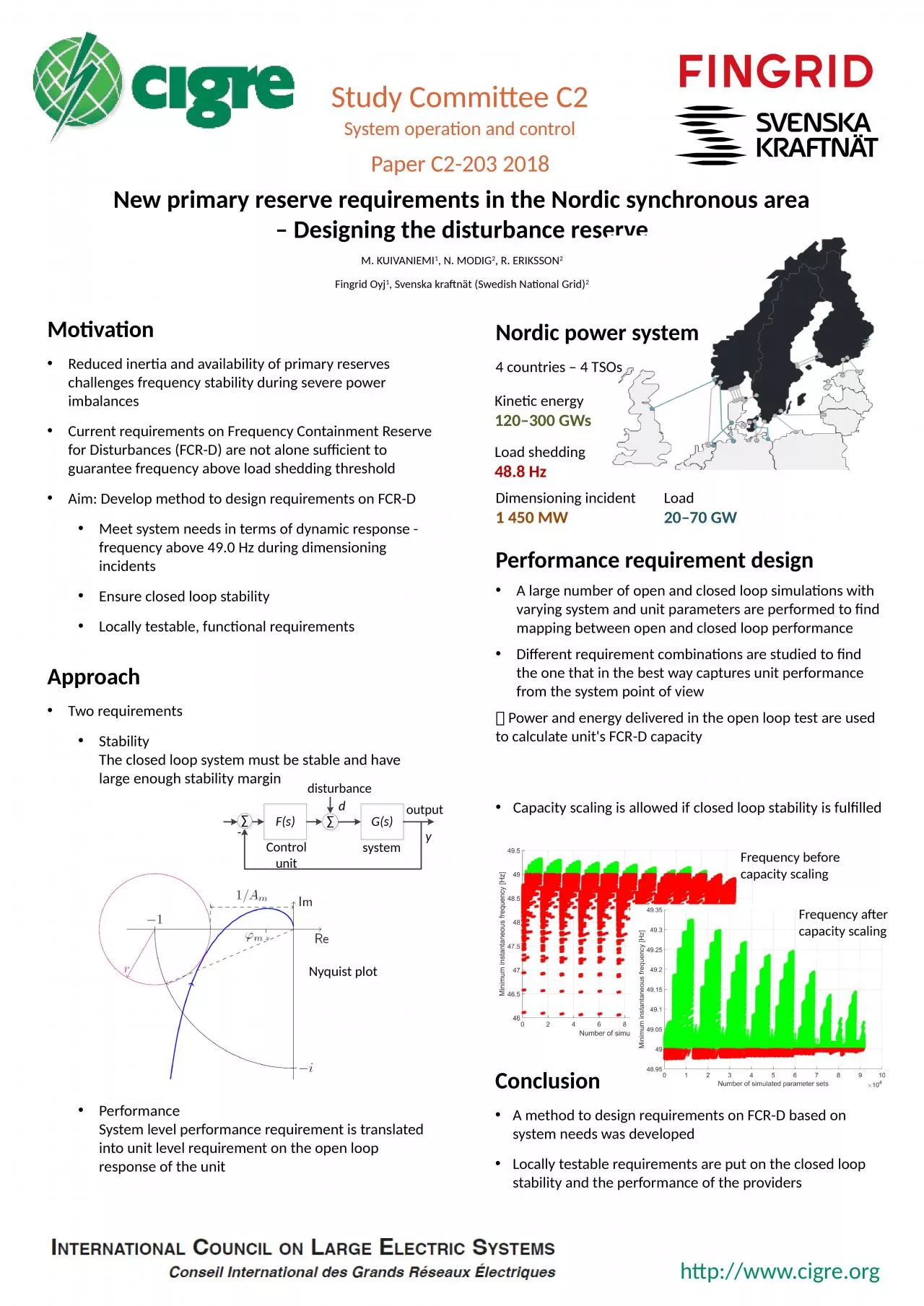

M KUIVANIEMI 1 N MODIG 2 R ERIKSSON 2 Fingrid Oyj 1 Svenska kraftnät Swedish National Grid 2 Motivation Reduced inertia and availability of primary reserves challenges frequency stability during severe power imbalances ID: 1024945
Download Presentation The PPT/PDF document "New primary reserve requirements in the ..." is the property of its rightful owner. Permission is granted to download and print the materials on this web site for personal, non-commercial use only, and to display it on your personal computer provided you do not modify the materials and that you retain all copyright notices contained in the materials. By downloading content from our website, you accept the terms of this agreement.
1. New primary reserve requirements in the Nordic synchronous area – Designing the disturbance reserveM. KUIVANIEMI1, N. MODIG2, R. ERIKSSON2Fingrid Oyj1, Svenska kraftnät (Swedish National Grid)2MotivationReduced inertia and availability of primary reserves challenges frequency stability during severe power imbalancesCurrent requirements on Frequency Containment Reserve for Disturbances (FCR-D) are not alone sufficient to guarantee frequency above load shedding thresholdAim: Develop method to design requirements on FCR-DMeet system needs in terms of dynamic response - frequency above 49.0 Hz during dimensioning incidentsEnsure closed loop stabilityLocally testable, functional requirementsApproachTwo requirementsStabilityThe closed loop system must be stable and have large enough stability margin PerformanceSystem level performance requirement is translated into unit level requirement on the open loop response of the unitPerformance requirement designA large number of open and closed loop simulations with varying system and unit parameters are performed to find mapping between open and closed loop performanceDifferent requirement combinations are studied to find the one that in the best way captures unit performance from the system point of view Power and energy delivered in the open loop test are used to calculate unit's FCR-D capacityCapacity scaling is allowed if closed loop stability is fulfilled ConclusionA method to design requirements on FCR-D based on system needs was developedLocally testable requirements are put on the closed loop stability and the performance of the providersStudy Committee C2System operation and controlPaper C2-203 2018Nordic power system4 countries – 4 TSOsDimensioning incident1 450 MWLoad20–70 GWLoad shedding48.8 HzKinetic energy120–300 GWsFrequency after capacity scalingNyquist plotFrequency before capacity scaling